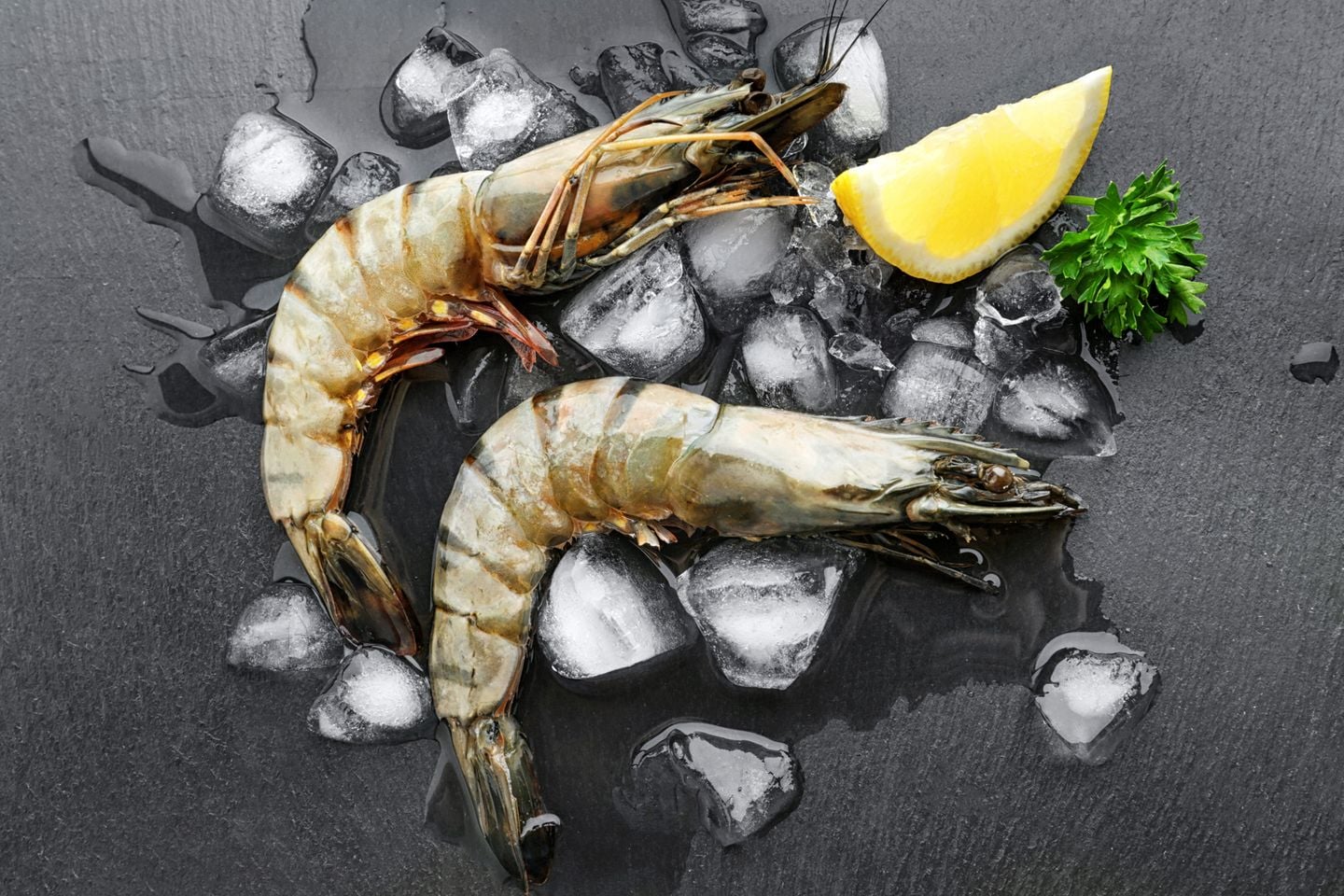The deep-sea pink shrimp is the most famous type, it is a decapod crustacean that measures between 8 and 16 cm and lives between 20 and 700 meters deep.
Rich in protein and low in fat, it is a source of vitamins, phosphorus, and iodine. It also contains Omega 3, which is essential for the human body. Shrimp is the subject of intensive and industrial fishing. It is also intensively farmed.
The consumption of shrimp around the world is very high.
The body of a shrimp consists of two parts:
- The cephalothorax, frequently known as the “head”, contains the shrimp’s teeth, sensory organs (eyes and antennae), and four pairs of walking legs that enable it to move on sandy sea beds. The first pair of legs end in claws, that vary in development depending on the species;
- The abdomen, usually called the “tail”, represents the edible part of the shrimp. It is articulated and equipped with two swimmerets.
The whole is covered with a shell whose colour varies according to the species.
